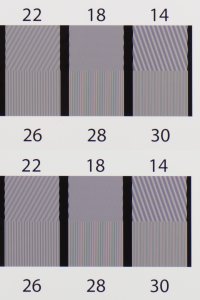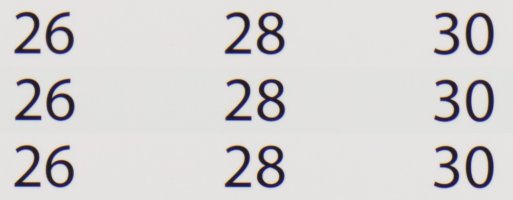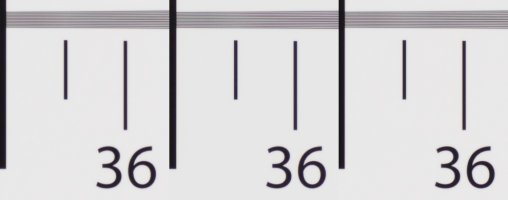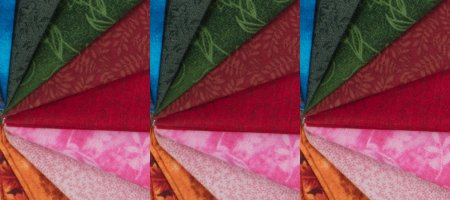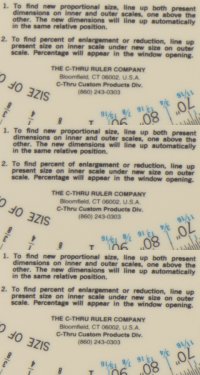My favourite article on MTF is by Norman Koren, and I quote from it.
“Perceived image sharpness (as distinguished from traditional lp/mm resolution) is closely related to the spatial frequency where MTF is 50% (0.5)— where contrast has dropped by half.”
“MTF is the spatial frequency response of an imaging system or a component; it is the contrast at a given spatial frequency relative to low frequencies.
Spatial frequency is typically measured in cycles or line pairs per millimeter (lp/mm), which is analogous to cycles per second (Hertz) in audio systems. Lp/mm is most appropriate for film cameras, where formats are relatively fixed (i.e., 35mm full frame = 24x36mm), but cycles/pixel (c/p) or line widths per picture height (LW/PH) may be more appropriate for digital cameras, which have a wide variety of sensor sizes.
High spatial frequencies correspond to fine image detail. The more extended the response, the finer the detail— the sharper the image.”
Those MTF values by Lensrentals and Optyczne show by proper measurement that the 5DSR has significantly higher MTF values than the 5DS and hence higher perceived sharpness. Eyeballing photos of playing cards that lack fine detail that needs to be resolved gives little information on resolution and is certainly no substitute for quantitative measurements.
“Perceived image sharpness (as distinguished from traditional lp/mm resolution) is closely related to the spatial frequency where MTF is 50% (0.5)— where contrast has dropped by half.”
“MTF is the spatial frequency response of an imaging system or a component; it is the contrast at a given spatial frequency relative to low frequencies.
Spatial frequency is typically measured in cycles or line pairs per millimeter (lp/mm), which is analogous to cycles per second (Hertz) in audio systems. Lp/mm is most appropriate for film cameras, where formats are relatively fixed (i.e., 35mm full frame = 24x36mm), but cycles/pixel (c/p) or line widths per picture height (LW/PH) may be more appropriate for digital cameras, which have a wide variety of sensor sizes.
High spatial frequencies correspond to fine image detail. The more extended the response, the finer the detail— the sharper the image.”
Those MTF values by Lensrentals and Optyczne show by proper measurement that the 5DSR has significantly higher MTF values than the 5DS and hence higher perceived sharpness. Eyeballing photos of playing cards that lack fine detail that needs to be resolved gives little information on resolution and is certainly no substitute for quantitative measurements.
Upvote
0

